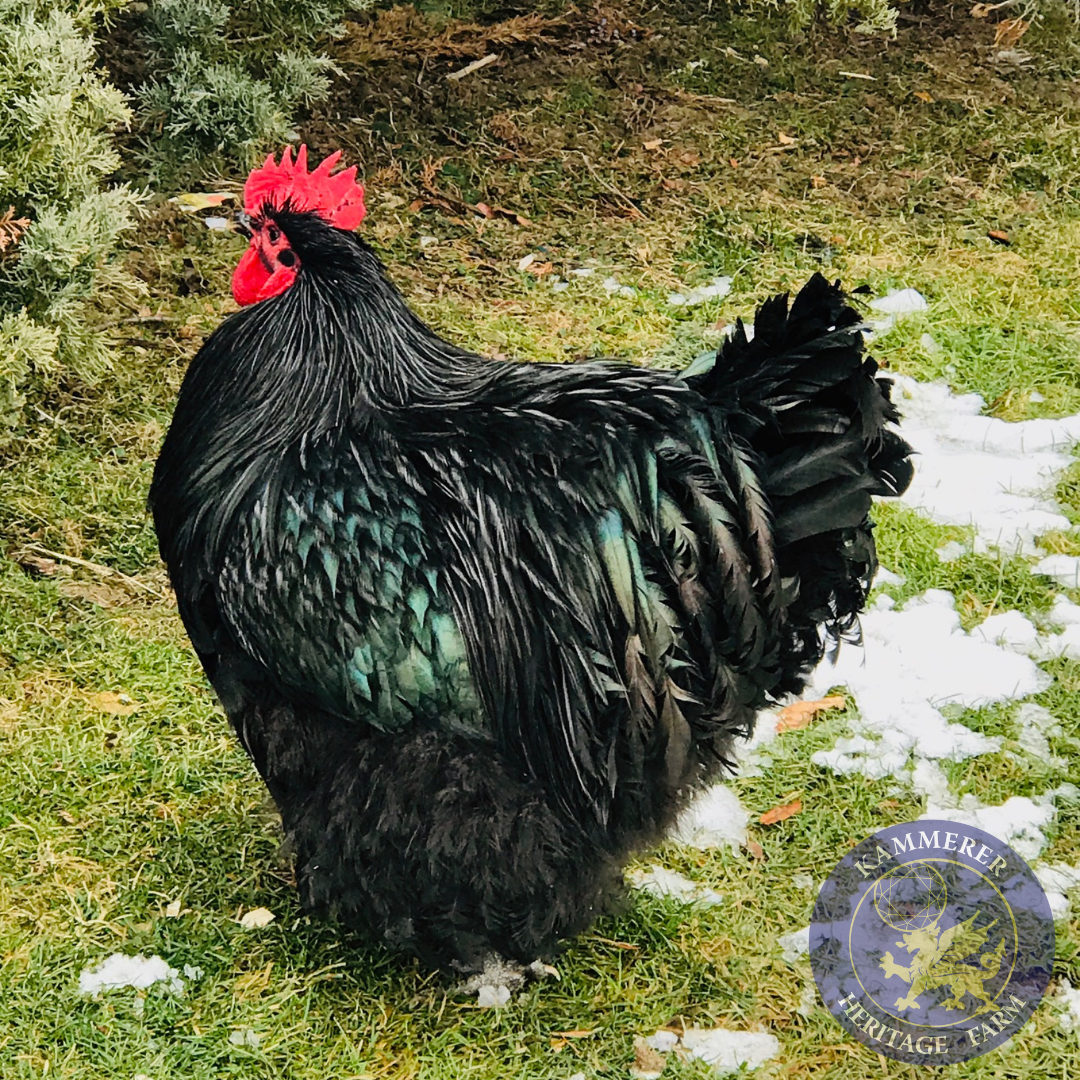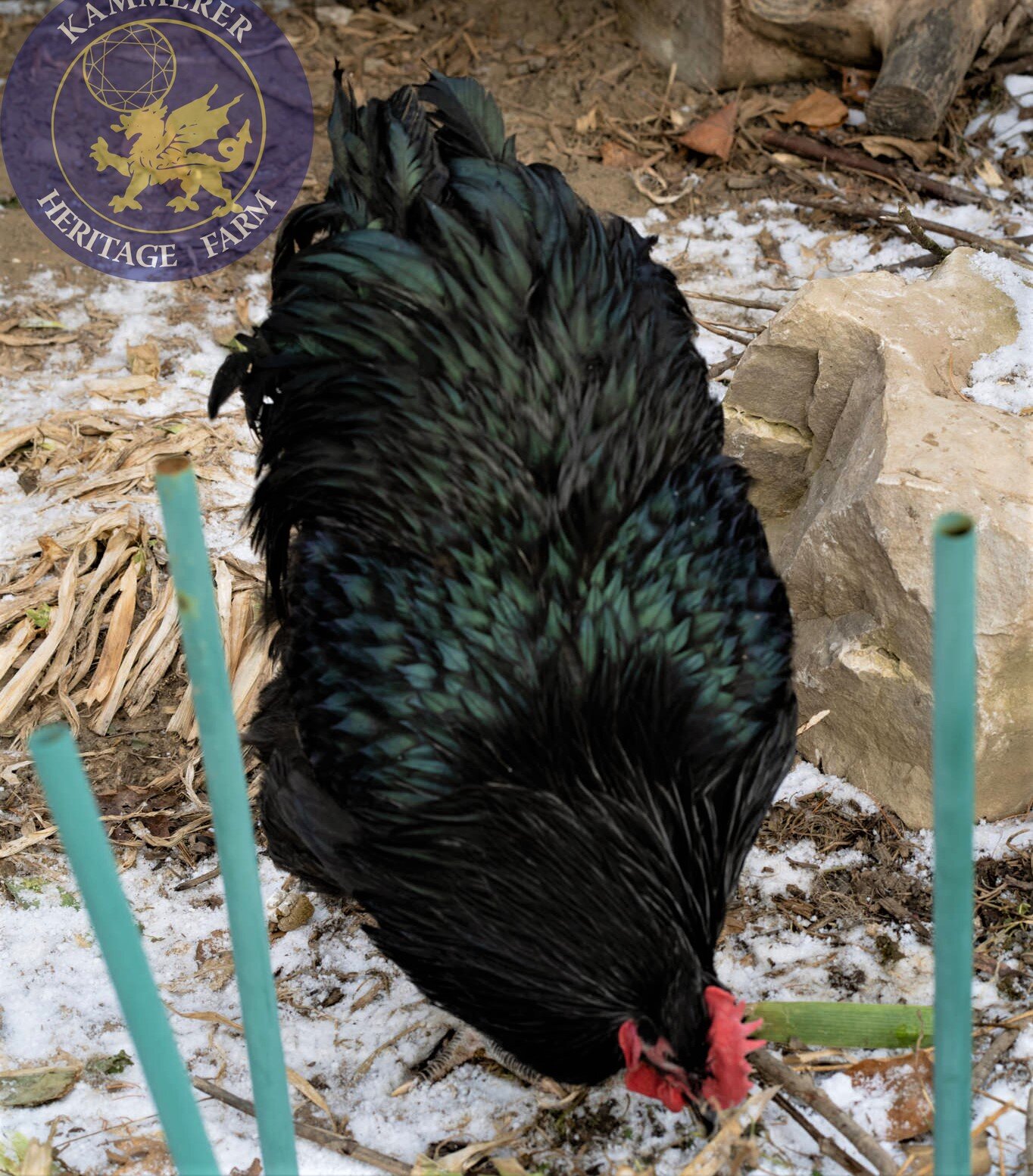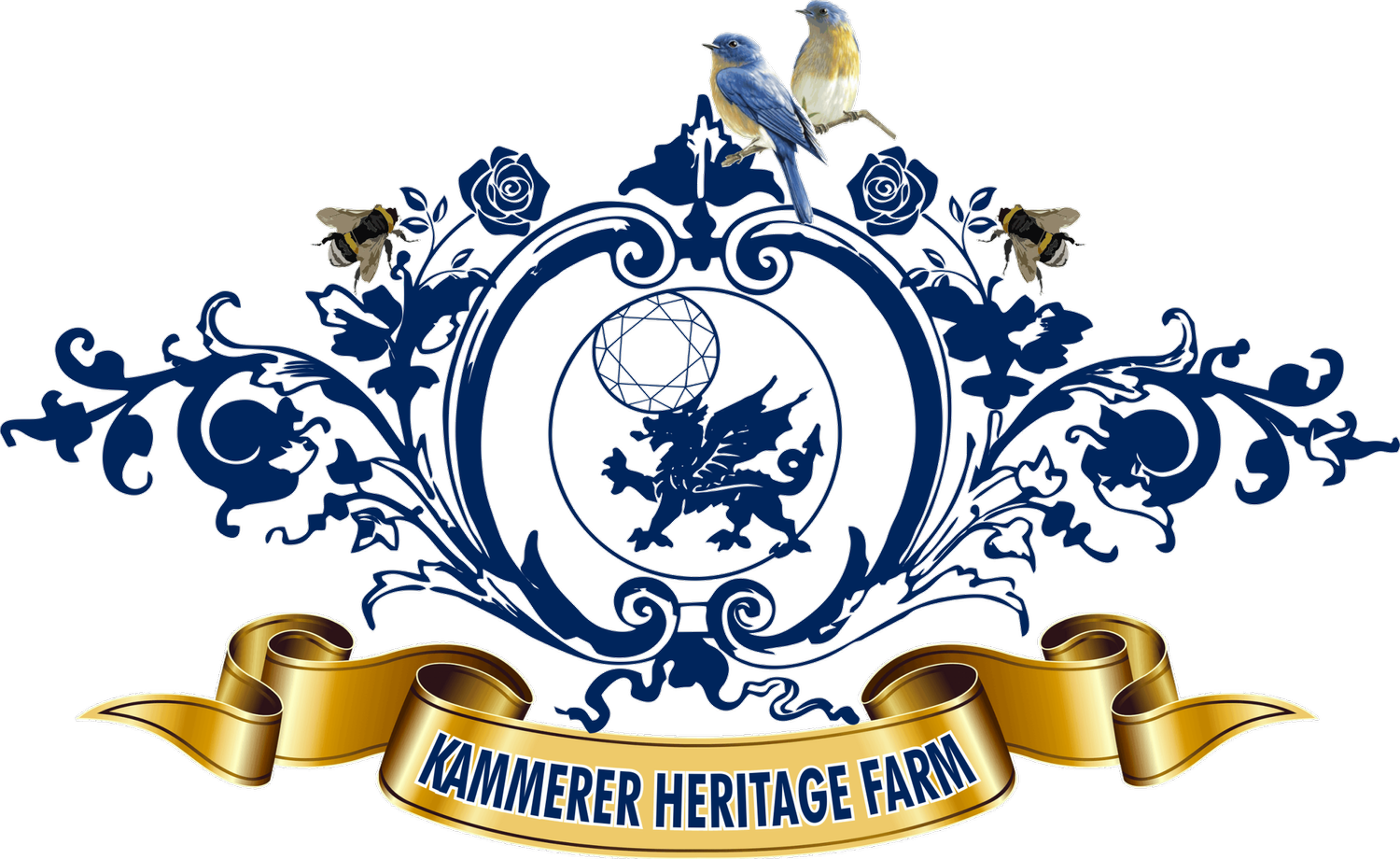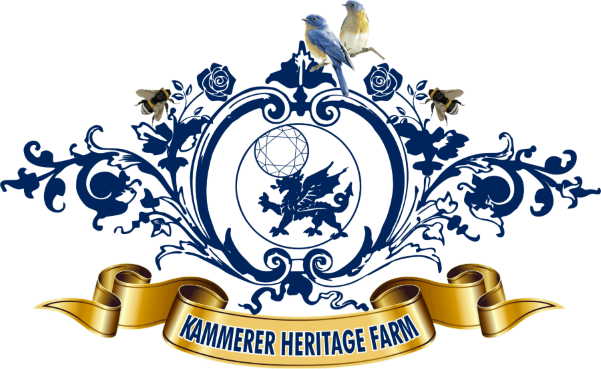 Image 1 of 4
Image 1 of 4

 Image 2 of 4
Image 2 of 4

 Image 3 of 4
Image 3 of 4

 Image 4 of 4
Image 4 of 4





Black Lavender Split Orpington
The Black Orpington is the first and Original Orpington Breed introduced in the late 1880’s by William Cook who was focused on blending various breeds to produce a black fowl "of handsome appearance and a good winter layer". Following the single comb came the Rose Comb black variety in 1888. Its origin was similar to the one preceding it, so presumably Plymouth Rocks or Langshans threw some Rose Combed progeny. The Black Lavender Split breed back to the Lavender every third Generation is essential in order to improve the Lavender soft Feathering and overall appearance. It is one of the larger Orpington breeds and The Black and Black Lavender Split showcases a most impressive “Blue Threading or Beetling” which is an iridescent of blue green and sometimes violet Sheen throughout its entire feathers. The affect is spectacular!. Unlike the Lavender, it has developed some great skills noticing predators from the air and is more attentive to its surroundings. The Black and Black Lavender Split are a definite must in any flock
Heritage:
English
Egg Colour: Pink/ Brown
Egg Count : 180-230 per year
Hens Body weight : 8-14 lbs
Rooster Body weight : 9-15 lbs
Temperament: Very Friendly
Hardiness: Docile, Quiet, and Affectionate, Canadian winter hardy
Genetics:
Over time, the color lavender can become dilute and adding genetically black birds (of the same breed) helps to improve feather quality and color while widening the gene pool. Birds with two copies of the lavender gene will present with lavender feather coloring. Lavender split to black birds (referred to as split) will have black coloring, but will carry one copy of the lavender gene and are able to pass it to their offspring.
Genetics:
Split x Lav = 50% Lav 50% Split
Black x Split = 50% black 50% split
Split x Split = 50% Split 25% Black 25% Lav
Black x Lav = 100% Split
The Black Orpington is the first and Original Orpington Breed introduced in the late 1880’s by William Cook who was focused on blending various breeds to produce a black fowl "of handsome appearance and a good winter layer". Following the single comb came the Rose Comb black variety in 1888. Its origin was similar to the one preceding it, so presumably Plymouth Rocks or Langshans threw some Rose Combed progeny. The Black Lavender Split breed back to the Lavender every third Generation is essential in order to improve the Lavender soft Feathering and overall appearance. It is one of the larger Orpington breeds and The Black and Black Lavender Split showcases a most impressive “Blue Threading or Beetling” which is an iridescent of blue green and sometimes violet Sheen throughout its entire feathers. The affect is spectacular!. Unlike the Lavender, it has developed some great skills noticing predators from the air and is more attentive to its surroundings. The Black and Black Lavender Split are a definite must in any flock
Heritage:
English
Egg Colour: Pink/ Brown
Egg Count : 180-230 per year
Hens Body weight : 8-14 lbs
Rooster Body weight : 9-15 lbs
Temperament: Very Friendly
Hardiness: Docile, Quiet, and Affectionate, Canadian winter hardy
Genetics:
Over time, the color lavender can become dilute and adding genetically black birds (of the same breed) helps to improve feather quality and color while widening the gene pool. Birds with two copies of the lavender gene will present with lavender feather coloring. Lavender split to black birds (referred to as split) will have black coloring, but will carry one copy of the lavender gene and are able to pass it to their offspring.
Genetics:
Split x Lav = 50% Lav 50% Split
Black x Split = 50% black 50% split
Split x Split = 50% Split 25% Black 25% Lav
Black x Lav = 100% Split
The Black Orpington is the first and Original Orpington Breed introduced in the late 1880’s by William Cook who was focused on blending various breeds to produce a black fowl "of handsome appearance and a good winter layer". Following the single comb came the Rose Comb black variety in 1888. Its origin was similar to the one preceding it, so presumably Plymouth Rocks or Langshans threw some Rose Combed progeny. The Black Lavender Split breed back to the Lavender every third Generation is essential in order to improve the Lavender soft Feathering and overall appearance. It is one of the larger Orpington breeds and The Black and Black Lavender Split showcases a most impressive “Blue Threading or Beetling” which is an iridescent of blue green and sometimes violet Sheen throughout its entire feathers. The affect is spectacular!. Unlike the Lavender, it has developed some great skills noticing predators from the air and is more attentive to its surroundings. The Black and Black Lavender Split are a definite must in any flock
Heritage:
English
Egg Colour: Pink/ Brown
Egg Count : 180-230 per year
Hens Body weight : 8-14 lbs
Rooster Body weight : 9-15 lbs
Temperament: Very Friendly
Hardiness: Docile, Quiet, and Affectionate, Canadian winter hardy
Genetics:
Over time, the color lavender can become dilute and adding genetically black birds (of the same breed) helps to improve feather quality and color while widening the gene pool. Birds with two copies of the lavender gene will present with lavender feather coloring. Lavender split to black birds (referred to as split) will have black coloring, but will carry one copy of the lavender gene and are able to pass it to their offspring.
Genetics:
Split x Lav = 50% Lav 50% Split
Black x Split = 50% black 50% split
Split x Split = 50% Split 25% Black 25% Lav
Black x Lav = 100% Split









